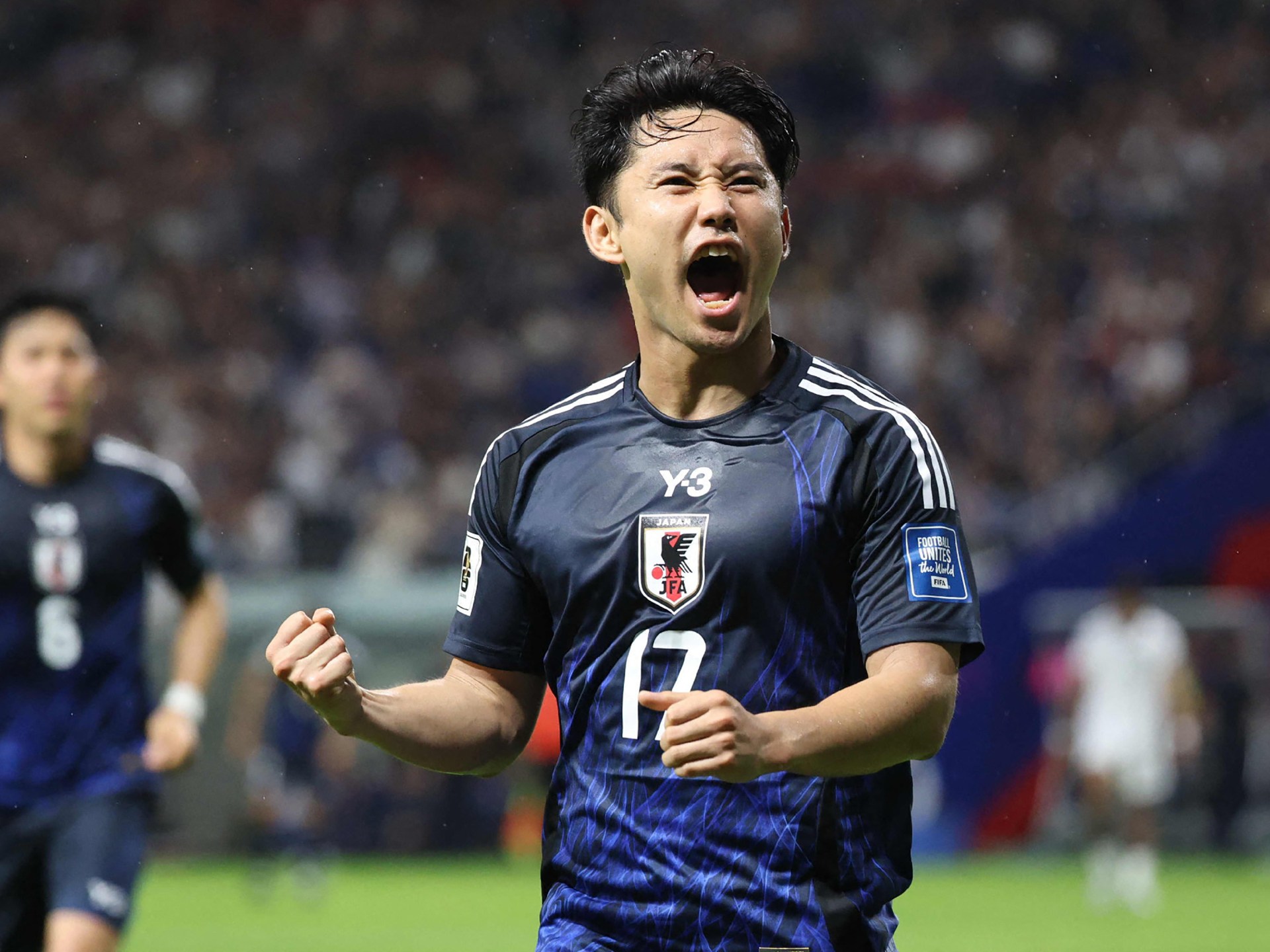## Samurai Blue Unleashes Fury: Japan Dominates Indonesia in World Cup Qualifier!
The roar of the crowd, the sting of defeat, the agony of a missed opportunity – those were the emotions that hung heavy in the air as Japan’s Samurai Blue delivered a merciless 6-0 thrashing to Indonesia in their final AFC World Cup Group C qualifier. This wasn’t just a win; it was a statement. A declaration that Japan is a force to be reckoned with on the global stage.

Kluivert’s Tactical Challenges and Indonesia’s Path Forward
Despite the heavy defeat, coach Patrick Kluivert’s tactical approach deserves analysis. While the final scoreline may not reflect his strategic intentions, the match exposed vulnerabilities that Indonesia must address moving forward.
Kluivert’s team selection, particularly in the defensive line, raised eyebrows. The absence of key players due to injuries undoubtedly impacted Indonesia’s performance. The quick succession of injuries to Kevin Diks and Yakob Sayuri further disrupted the team’s defensive structure, leaving them exposed to Japan’s relentless attacks.
Areas for Improvement
- Defensive Solidity: Indonesia’s defense was severely stretched throughout the match. The team needs to work on improving its defensive organization and individual marking, especially against quick and agile opponents like Japan.
- Midfield Control: Losing control of the midfield allowed Japan to dictate the tempo and create numerous scoring opportunities. Indonesia must find ways to win back possession and establish a stronger presence in the middle of the park.
- Attacking Threat: While Indonesia displayed moments of attacking intent, they lacked the cutting edge to trouble Japan’s goalkeepers. Developing more creative attacking options and improving finishing accuracy will be crucial for future success.
Indonesia’s journey in the next round of qualifiers will be challenging. However, identifying and addressing these weaknesses will be crucial for their chances of progressing to the World Cup.
Japan’s Tactical Flexibility and Road to 2026
Japan’s resounding victory over Indonesia showcased their tactical versatility and dominance. Hajime Moriyasu’s side demonstrated a clear understanding of their strengths and effectively exploited Indonesia’s vulnerabilities.
Tactical Prowess
Moriyasu’s coaching philosophy revolves around fluid attacking movements and intelligent positional play. Japan’s ability to switch between different formations and adapt to their opponents’ strategies has been a key factor in their success.
Against Indonesia, Japan employed a high-pressing system that suffocated the opposing midfield and forced errors. Their quick passing sequences and incisive movements created numerous scoring opportunities, leading to the dominant scoreline.
Teamwork and Discipline
Japan’s performance was a testament to their strong team spirit and discipline. Each player executed their role with precision and commitment, demonstrating a collective desire to achieve victory.
The seamless interplay between attacking players like Daichi Kamada and Takefusa Kubo, combined with the solid defensive foundation provided by the backline, showcased the team’s well-honed cohesion.
Key Players
Several standout performances contributed to Japan’s success:
- Daichi Kamada: The Crystal Palace midfielder was a constant threat, scoring twice and setting up another goal with his intelligent movement and clinical finishing.
- Takefusa Kubo: The Real Sociedad winger displayed his exceptional dribbling skills and creativity, linking up well with his teammates to create scoring opportunities.
- Ryoya Morishita: The goalkeeper made several crucial saves to deny Indonesia any hopes of a comeback.
Conclusion
The resounding 6-0 victory for Japan over Indonesia in their final AFC World Cup Group C qualifier was a statement of dominance. Al Jazeera’s report highlighted Japan’s clinical finishing and tactical superiority, dismantling Indonesia’s hopes of advancing to the next stage. The margin of victory underscored the stark reality of the gulf in experience and technical prowess between the two nations.
This result carries significant implications for both teams. For Japan, it solidifies their position as a force to be reckoned with in Asian football, setting the stage for a potential deep run in the World Cup. Indonesia, on the other hand, faces a period of introspection and rebuilding. This defeat serves as a stark reminder of the challenges they face in catching up to the region’s elite. Moving forward, the Indonesian Football Association must prioritize investment in youth development and tactical innovation if they are to bridge the gap and compete on the world stage. The question remains: Can Indonesia learn from this crushing defeat and forge a path to greater success?
The roar of the Japanese fans in Saitama Stadium echoed a message that reverberated across Asia: the pursuit of footballing greatness demands relentless dedication and unwavering ambition. Indonesia’s journey, while momentarily derailed, serves as a poignant reminder that the path to victory is rarely smooth, and the spirit of resilience is crucial to overcome adversity.